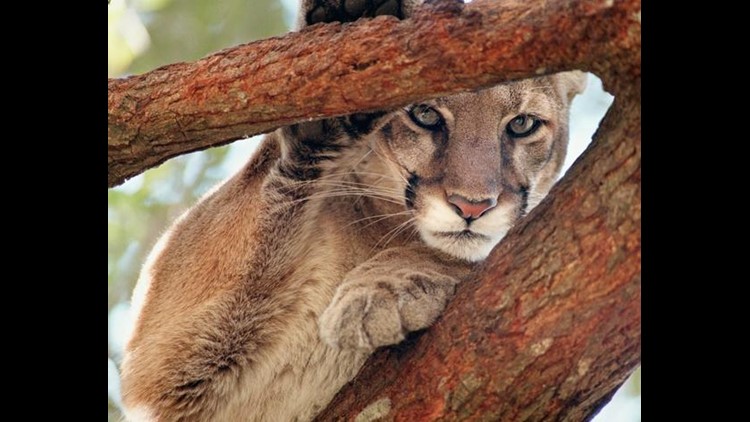As iconic as they are endangered, Florida panthers continue dying in alarming numbers on state roadways, while the number of known panther births lags significantly behind prior years, state wildlife data show.
Conservation advocates say the troubling panther numbers reveal that habitat loss and fragmentation resulting from development, as well as scarcity of the panther's natural prey due to growing python infestation in South Florida, is likely getting worse.
The long-term survival of the species remains in jeopardy. Although the big cats are protected under federal and state laws, advocates worry.
"The numbers are really not good. It's really concerning. And it's probably going to get worse," said Kate MacFall, the Florida director of The Humane Society of the United States.
Especially disconcerting, MacFall said, is an apparent decline in documented panther births in the wild.
"It's a pretty significant decrease since last year," she said. "It is very concerning. The numbers are not going in the right direction and I think we should all be concerned that they're not good."
Some say wild panther births aren't declining.
Nancy Payton of the Florida Wildlife Federation said the known panther kitten births reported by the Fish and Wildlife Conservation Commission are based on female panthers fitted with tracking collars.
"Fewer and fewer panthers are collared due to humane, financial and logistical reasons," Payton said.
Carli Segelson, a commission spokeswoman, said currently only three female panthers are collared. The devices are the only way scientists can locate dens to check for kittens, she said.
State and federal panther researchers estimate the Florida panther population totals 120 to 230 adults animals — primarily in the species' Southwest Florida breeding territory.
They say it's impossible to know the exact panther population at any given time because of constant births, deaths and the inherent limitations of current survey methods.
Payton said the panther population number likely is much higher when other areas are considered elsewhere in the state. She noted females and kittens were documented within the past year north of the Caloosahatchee River for the first time in 30 years.
MacFall said the number of panther births hasn't been raised at recent Fish and Wildlife Commission meetings. But it could come up soon.
As of June 16, six panther kittens — in two separate litters — have been documented this year, commission records show.
Last year, 19 kittens — from seven litters — were reported including 15 by the end of June 2017. In comparison, a total of 15 kittens were documented in both 2016 and 2015, while there were 32 in 2014, according to the records.
"It's heartbreaking ..." MacFall said of the disparity. "We have to do a better job of being aware of this. So many of the moms and the dads are being hit by cars it's surprising as many survive as they do."
The big cats are being killed on the state's roads while foraging for food or scouting territory.
So far this year, 17 panthers have died — all but two as the result of being hit by cars or trucks. A total of 30 died last year including 77 percent or 23 from vehicle strikes, according to Florida Fish and Wildlife Conservation Commission data.
In 2016, 42 were killed including 34 or 81 percent from vehicle strikes. Forty-two also were killed in 2015 including 30 or 71 percent by vehicle strikes. In 2014, panther deaths totaled 34 including 24 or 71 percent on roads, the data show.
Before the year 2000, annual panther road kills were four or less. Some scientists and others say as the panther population increases, so, too, will the number killed in collisions with cars and trucks.
Segelson said "an increase in the numbers of panthers also has increased the opportunity for panthers to come into contact with people and vehicles."
MacFall said state efforts to reduce panther road deaths such as construction of wildlife crossings and lowering highway speed limits through their territory have helped. More can be done, she said.
"Public awareness and education are critical," MacFall said. People need to slow down and drive carefully in panther territory, especially near wildlife crossings.
MacFall said it's also important that livestock and pet owners in panther habitat take precautions to protect their animals from the apex predator. Keeping livestock in secured enclosures, and bringing pets inside can prevent panthers from getting at them, she said.
"Florida panthers don't need to be eating animals that are not their natural prey," MacFall said. It's common sense, she said, that invasive species such as the pythons wreak havoc on the natural order of an ecosystem. Independent research has shown that panthers are roaming farther afield because their natural prey is gone.
However, the biggest detriment to panthers — habitat loss and fragmentation — still must be addressed, she said.
"This is an iconic species that is absolutely remarkable. We're so fortunately in Florida to have them, and we have to protect habitat. Without habitat, where are they going to live," MacFall said.



